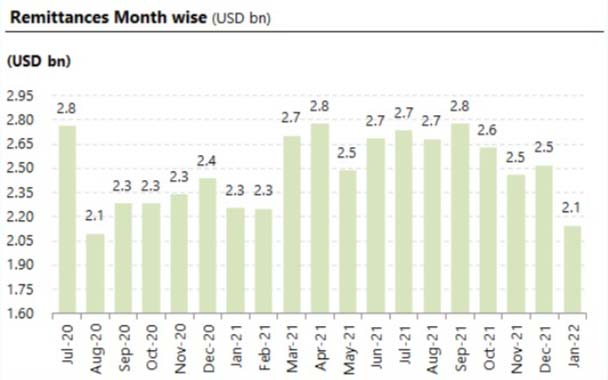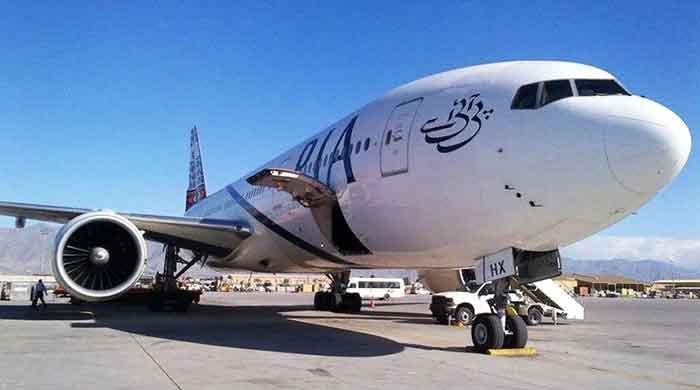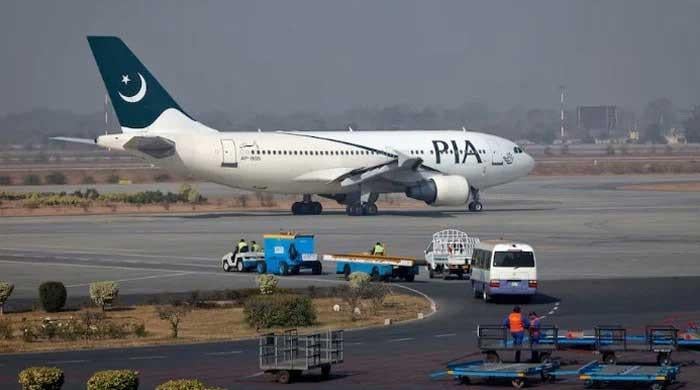Remittances drop to lowest level since August 2020
Remittances sent home by overseas workers in January decline by 5% year-on-year to $2.1 billion
February 12, 2022

- Remittances in January decline by 5% year-on-year to $2.1 billion.
- Inflows remain above $2bn for the 20th consecutive month.
- Remittances roar to their highest in July-January period.
KARACHI: Remittances sent home by overseas workers in January declined by 5% year-on-year to $2.1 billion — the lowest amount of monthly remittances after August 2020, according to analysts.
The inflows slumped 15% month-on-month; however, the State Bank of Pakistan (SBP) attributed a decline in January's remittances to the easing of travel restrictions and seasonal factors.
The central bank, however, reported that despite a decrease workers’ remittances remained above $2 billion for the 20th consecutive month.

Meanwhile, the inflows roared to their highest in the first seven months of the ongoing fiscal year 2021-22 (July-January), driven by government efforts to encourage the use of official channels to transfer money, the central bank said on Friday.
“During the first seven months of FY22, remittances rose to a record $18 billion, 9.1% higher than the same period last year,” said the SBP in a statement.
Remittances, a major source for the country’s foreign exchange reserves and support for the low-income families, stayed robust aided by the government incentives to the expatriates for sending money home through official channels and the crackdown on operators of illegal sources like hundi and hawala.
Besides, a growing number of non-resident Pakistanis living in various countries sent extra money to families back home to overcome the impact of the pandemic, which also caused a surge in remittance flows.
These solid remittances have lent some support to the external current account, contributed to the buildup of forex reserves, and helped decrease the government’s external financing requirements.
The inflows are mainly sourced from Saudi Arabia, United Arab Emirates, the United Kingdom, and the United States, the central bank said.
Remittances from Saudi Arabia rose 1.5% to $4.574 billion in July-January FY22.
Pakistani citizens working in the UAE sent home $3.382 billion in the period under review compared to $3.443 billion in the same period last year.
Remittances from the UK rose 13.2% to $2.467 billion. The money sent home by migrant workers in the US stood at $1.701 billion, compared with $1.406 billion a year ago.
Analysts expect remittances to exceed the $30 billion mark in FY22.
The SBP together with the government has introduced various policy measures, from time to time to enhance the flow of home remittances through formal channels.
Recently, it has offered an incentive of Re1 per US dollar to exchange companies for surrendering 100% remittances in the interbank market.
The SBP expects this incentive will encourage exchange companies to bring more home remittances into the financial system.
Originally published in The News









